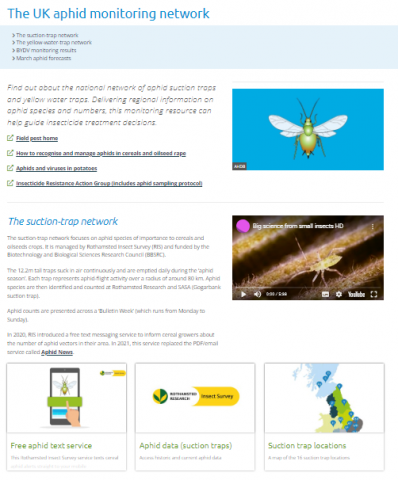View information and results from the Suction Trap Network.

AHDB webpage highlighting the national network of aphid suction traps and yellow water traps run by Rothamsted Insect Survey, supported by BBSRC. Delivering regional information on aphid species and numbers, this monitoring resource can help guide insecticide treatment decisions.
View information and results from the Suction Trap Network.
Integrated Pest Management (IPM) is based on a diversity of pest management measures (prevention, non-chemical control, best practices for optimizing pesticide efficiency, etc.). These are combined at the farm level to enable reduced reliance on pesticides, and therefore a decrease in the exposure of the environment and people to pesticides.
We deliver transformational projects to drive productivity and boost farming and supply chain businesses. We want the industry to thrive in a rapidly changing world and continue to produce high quality food, maintain our beautiful landscape and leave a legacy for generations to come.
Rothamsted Research is a world-leading, non-profit research centre that focuses on strategic agricultural science to the benefit of farmers and society worldwide.
Sitobion avenae and Rhopalosiphum padi, otherwise known as the grain aphid and bird cherry-oat aphid, are the two main species of cereal aphids.
FarmPEP aims to connect the many networks, communities and groups across Agriculture. Add your network as a Group and connect to the 'Networks' Topic to have your network show up below.
Insecticides are a type of agrochemical used to kill, harm or deter insects that either directly infect cultivated plants/animals or that are carriers of disease. In agricultural settings, insecticides may be used in both arable and livestock husbandry situations. The classification of insecticides can occur in various ways: via their biochemical mode of action, their mode of penetration or on the basis of their chemistry. They can also come in various formulations and delivery-systems such as sprays, gels or baits.